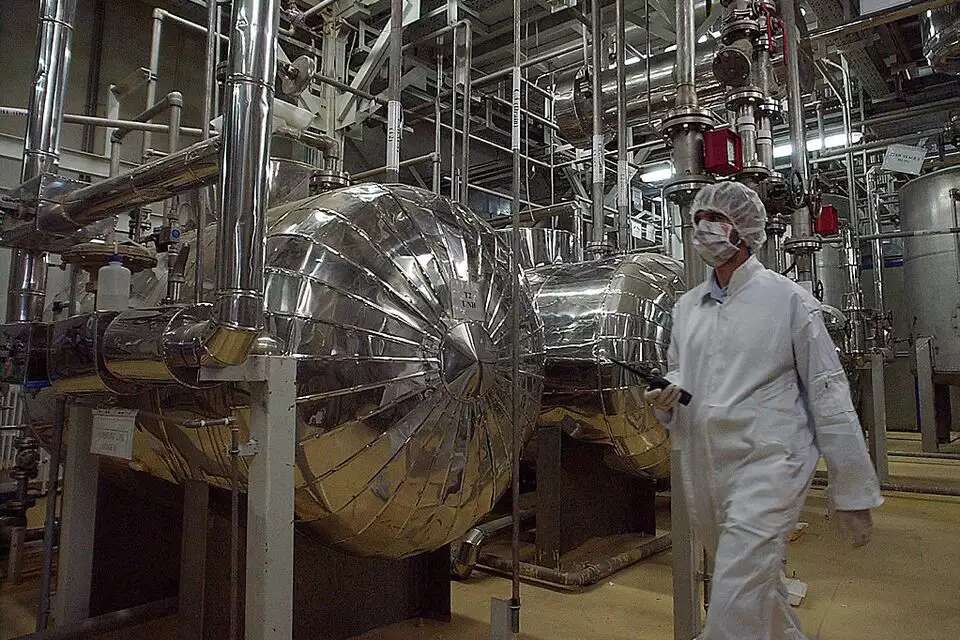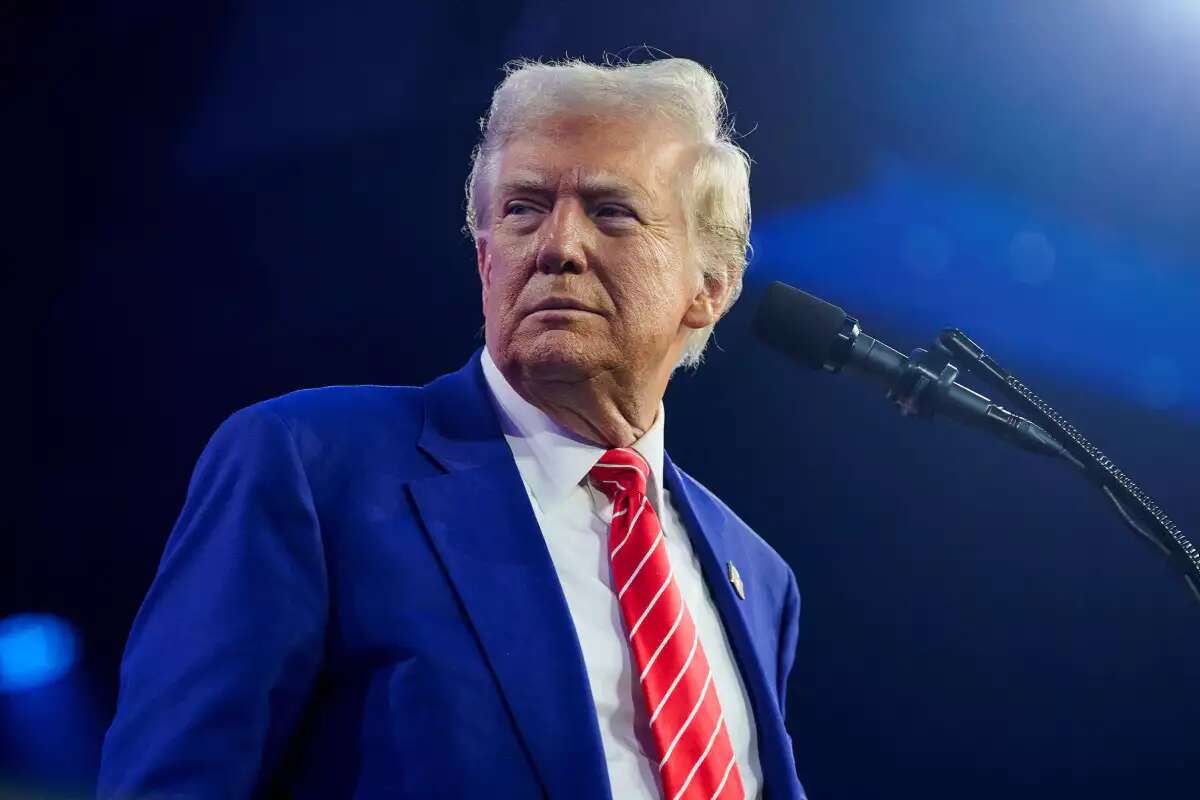A significant shift occurred yesterday in the tense and hostile relationship between Washington and Tehran, as diplomatic delegations from the two rivals met in Oman for the first time in ten years. The meeting marked the initial round of talks aimed at paving the way for a "Vienna Accord 2."
From the Trump administration's perspective—having pulled out of the 2015 nuclear deal three years after it was signed—a new agreement must, among other things, completely eliminate the risk of Iran completing its nuclear project. Such a development would not only allow Iran to intimidate the entire Sunni sphere but also add another layer of instability and anxiety to an already volatile region. It could even drive key regional players like Egypt and Saudi Arabia to follow a similar path to avoid being left exposed.

It is important to emphasize that although Iran is currently facing a severe economic and financial crisis, and although its geopolitical standing has suffered considerably due to the dramatic weakening of several of its key proxies—foremost among them Hezbollah—this does not predetermine the outcome or trajectory of the newly launched process in Oman.
In 2018, the year Trump decided to withdraw the US from the original nuclear deal (signed in 2015 alongside other world powers) and gradually imposed a sweeping series of escalating sanctions on the Iranian regime, relations between the two countries were also marked by a fundamental asymmetry in terms of strategic resources and overall power.
US pressure triggered Iranian defiance
Despite this imbalance, the White House's coercive enforcement strategy bore no fruit and did nothing to soften Tehran's positions. On the contrary, US pressure led to Iranian defiance, one of the most alarming expressions of which was the systematic and gradual violation of the 2015 agreement's uranium enrichment cap (3.75%), reaching a dangerous level of 60%. This placed the Iranian terror state just a step away (90% enrichment) from realizing its nuclear nightmare.

According to the report, Iran is using its satellite program as a cover for nuclear weapons development. Photo: AFP
This defiance, despite the costs incurred, was not a one-off or unique event in modern history. For instance, in late 1939, Finland engaged in tough negotiations with the far more powerful Soviet Union and stubbornly rejected its territorial demands. The result was the "Winter War," a Pyrrhic Soviet victory that came at an unexpectedly high human, military, and economic cost for the Kremlin.
Similarly, resource-poor Japan refused to succumb to growing US pressure in 1940 and 1941, instead launching a surprise attack on the US on December 7, 1941. It waged a brutal war until its surrender in August 1945, only after atomic bombs were dropped on Hiroshima and Nagasaki.
Despite the enduring gap between the operational mindset of Iran's leaders and the US's cost-benefit approach—untethered from ideology or faith-based frameworks—the strategic, diplomatic, and economic challenges Tehran faces today are fundamentally different from those of 2018.
Alongside its accelerating economic collapse (which carries the risk of widespread domestic unrest) and the downfall of several of its proxy groups responsible for subversive and violent initiatives, Iran now faces four looming and daunting deadlines that could prompt a reevaluation of at least some of its entrenched positions. (Notably, in parallel with the threats, Washington is also signaling a willingness to compromise—potentially giving Tehran a way to climb down from its defiant stance without losing face.)
A prerequisite for impressing Saudi Arabia
The first deadline is the two-month ultimatum issued by President Trump roughly two weeks ago for securing a "revamped Vienna Accord." If such an agreement is not achieved—or at least nearing completion, even partially—it could lead to the activation of a particularly painful military option.

The second deadline is tied to Trump's scheduled visit to Riyadh in May. From the White House's perspective, it is essential to arrive in the region with either an agreement in hand or clear signs of accelerated progress—backed by the presence of a massive and ready military armada, projecting formidable strength and a willingness to act should talks break down.
This is a prerequisite for impressing Saudi Arabia (and other members of the moderate Sunni bloc) with the resolve and reliability of the US as a stabilizing power and Gulf protector. It also lays the groundwork for deeper strategic cooperation between these countries and the American hegemon—including, down the line, potentially expanding the Abraham Accords under Trump's leadership. At the same time, it would allow Trump to project the image of an unrivaled negotiator capable of resolving hotspots of tension and violence, as he pledged during his campaign.

The third deadline, likely to worry Iran even more, is the end of June. According to the original 2015 agreement, if a new deal is not reached by this time—and Iranian violations persist—some of the original signatories (Britain, Germany, and France) will reinstate sanctions that were previously lifted.
In other words, Iran could soon find itself caught in a tightening vise: the real possibility of US military action, followed closely by renewed European sanctions (on top of the heavy sanctions reimposed by Trump in 2018). All of this would be triggered unless Iran significantly softens its traditionally hardline stances.
Saber-rattling alongside conciliatory statements
To top it off, core provisions of the 2015 Vienna Accord are set to expire on October 18. For the US administration, the notion of Tehran emerging from this expiration date with a free hand on uranium enrichment—potentially posing an immediate and direct threat to the region—is unacceptable.
Against this backdrop, US-Iran talks began Saturday, with President Trump pursuing a "big stick" and "big carrot" approach: saber-rattling and show-of-force on one hand, coupled with softened rhetoric and an openness to compromise on the other.

Indeed, the very fact that another round of talks has already been scheduled for next week suggests some progress was made during the opening session—if only because the talks did not collapse or get suspended on the spot. Moreover, the dynamic that emerged (or was preplanned) between the two chief negotiators—American envoy Steve Witkoff and Iranian Foreign Minister Abbas Araghchi—suggests genuine intent to continue the dialogue.
Initially billed as indirect talks—with Omani Foreign Minister Badr al-Busaidi serving as a go-between while delegations remained in separate rooms—the meeting evolved by its end (after two and a half hours) into a direct, albeit brief, encounter between Witkoff and Araghchi. This appears to be an incremental, modular process straight out of the Henry Kissinger playbook, with the next expected step being a direct, public, and televised meeting between the two lead envoys.
A long road ahead
At least for now, both adversaries appear interested in advancing the diplomatic track—each for its own reasons. Still, it's important to note that the opening session only scratched the surface, primarily involving the presentation and mapping of initial positions, relayed by al-Busaidi.
It's equally clear that these core stances are merely starting points. Just as back-channel talks can quickly evolve into direct negotiations, entrenched doctrines may eventually crack or loosen.

Witkoff himself already showed signs of flexibility, indicating before the meeting that the US demand focused on limiting enriched uranium levels—not necessarily dismantling Iran's entire nuclear project (in contrast with the Libyan precedent of 2003). Nor are there yet clear signs that Trump will insist—precondition-style—on an unequivocal Iranian commitment to sever ties with its violent proxies (including the Houthis) or to end (or significantly scale back and subject to effective oversight) its ballistic missile program.
Despite these early signs of cautious optimism—and despite the likelihood that Tehran's geopolitical standing will further deteriorate if its relations with Moscow cool (especially after the war in Ukraine ends), which would weaken its bargaining position—the road to a final agreement remains long and riddled with obstacles.
What is certain is that the launch of this diplomatic process (which, if it gains traction, would eliminate the military option) spells a decidedly unwelcome development for Prime Minister Benjamin Netanyahu. Moreover, even if a deal is eventually reached that fails to meet the strict criteria Netanyahu has long insisted upon, it's hard to imagine he would reprise his failed campaign against the original Vienna Accord and its chief architect, then-President Barack Obama—especially not against a friendly but determined and unpredictable president like Donald Trump.




